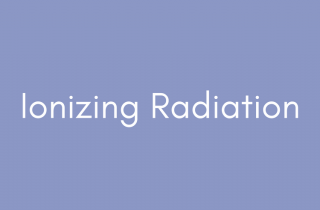Male Breast Cancer
At a Glance
Men can get breast cancer.
Breast cancer is very uncommon in males compared to females.
Breast cancer affects the same breast organ and tissue in males as in females.
Overview
What is male breast cancer?
The tumor arises in the same organ and tissue in males as in females, although more commonly in ductal cells, and less commonly in lobular cells.
Signs & symptoms of male breast cancer
The most common sign is a lump in breast tissue. The diagnosis can be confirmed by mammography and biopsy.
Statistics
Male breast cancer incidence
The National Cancer Institute reports a male breast cancer incidence of 1.2 per 100,000. It is estimated that in 2020, 2,620 new cases of male breast cancer will be diagnosed.[1]
What age range of men does it typically affect?
The age range is very broad and can include young adults all the way to those in their 90s. According to the National Cancer Institute data, the median age at breast cancer diagnosis in males is about five years older than in females. A 2020 study found that approximately one third of cases were diagnosed in males under 60 years old, one third in men aged 60–69 years, and one third in men aged ≥70 years.[2]
What’s the mortality rate for male breast cancer compared to female breast cancer?
In males, the breast cancer mortality rate for the years 2013-2017 was 0.29 per 100,000 compared to 19.88 per 100,000 in females.[3]
How does male breast cancer differ from female breast cancer?
For men, the risk of getting breast cancer is about 1 in 833 compared to 1 in 8 for women.[4] Disparities exist in male breast cancer. While it is 100 times less common in white women than white men, it is 70 times less common in Black men than Black women.[5] Black men and women have poorer prognosis and higher mortality than white men and women.[6] Data released in 2020 showed Black men have an incidence rate of 1.9 per 100,000 and a mortality rate of 0.5 per 100,000, higher than any other ethnic or racial group in the United States.[7] This means there are more new cases and deaths of male breast cancer within the Black population in the United States.
Overall, men are 43% more likely to die from breast cancer than women.[8] Male breast cancer is most commonly of the ER+/PR+ type and tends to occur at older ages at diagnosis. There is also no such thing as pre-menopausal breast cancer in males. BRCA1/2 also confers increased risk of male breast cancer.
Camp Lejeune Case Study
From the 1950s through the 1980s, people living or working at the U.S. Marine Corps Base Camp Lejeune, North Carolina, were potentially exposed to drinking water contaminated with industrial solvents, benzene, and other chemicals. We interviewed Richard Clapp, M.P.H., D.Sc. to find out more about his role as a scientific advisor to the study team and the link between contaminated drinking water and male breast cancer. Learn more
[1] [4] [5] [6] American Cancer Society. Available online: https://www.cancer.org/cancer/breast-cancer-in-men/about/key-statistics.html. Accessed October 21, 2020.
[2] Ellington TD, Henley SJ, Wilson RJ, Miller JW. Breast Cancer Survival Among Males by Race, Ethnicity, Age, Geographic Region, and Stage — United States, 2007–2016. MMWR Morb Mortal Wkly Rep 2020;69:1481–1484. http://dx.doi.org/10.15585/mmwr.mm6941a2.
[3] Centers for Disease Control and Prevention. Male Breast Cancer Incidence and Mortality, United States—2013–2017. USCS Data Brief, no 19. Atlanta, GA: Centers for Disease Control and Prevention, US Department of Health and Human Services; 2020. Available at: https://www.cdc.gov/cancer/uscs/about/data-briefs/no19-male-breast-cancer-incidence-mortality-UnitedStates-2013-2017.htm Accessed October 21, 2020.
[7] Centers for Disease Control and Prevention. Male Breast Cancer Incidence and Mortality, United States—2013–2017. USCS Data Brief, no 19. Atlanta, GA: Centers for Disease Control and Prevention, US Department of Health and Human Services; 2020.
[8] Liu N, Johnson KJ, Ma CX. Male breast cancer: an updated surveillance, epidemiology, and end results data analysis. Clinical breast cancer. 2018 Oct 1;18(5):e997-1002.
Types: Fact Sheet




